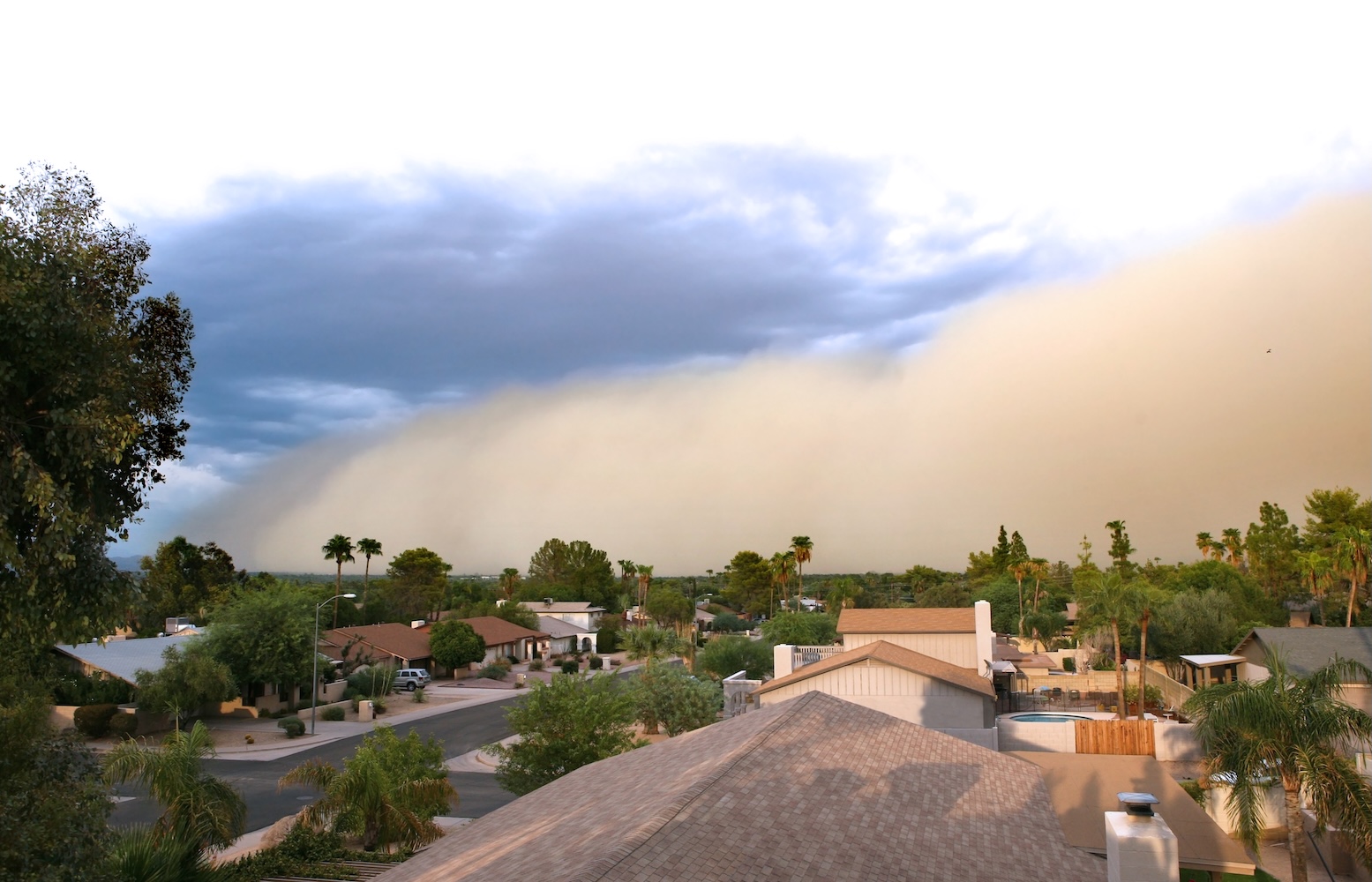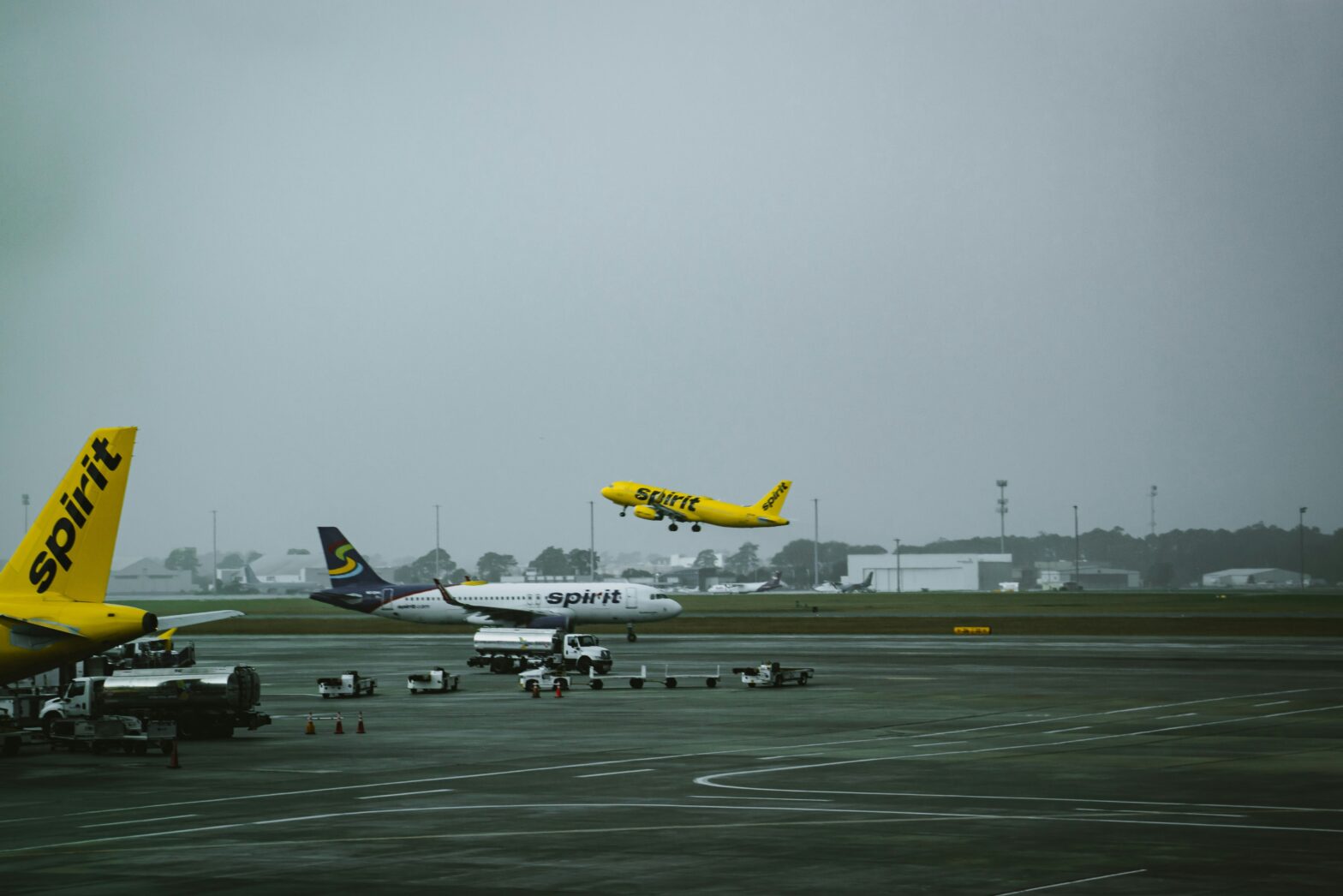A large-scale dust storm known as a “haboob” struck Phoenix, Arizona, on August 25, causing power outages, flight disruptions, and low visibility for drivers.
According to the National Weather Service (NWS), a haboob is a specific type of dust storm created by the outflow of thunderstorm winds. Though dust storms often last just a few minutes, they’re usually unpredictable and dangerous. They include strong, intense winds that disperse immense plumes of visibility-impairing dust and dirt. The American Meteorological Society’s glossary notes that the word haboob originates from the Arabic word “habb,” which means “to blow,” and is used to describe “wind and sandstorms/duststorms in central and northern Sudan, especially around the Khartoum area,” where they are common from May through September.
In Phoenix, the haboob was followed by a small amount of rain. The Associated Press reported on August 26 that crews restored power for the majority of the 55,000 Phoenix-area residents who lost power after the haboob.
The NWS Phoenix noted on August 25 that a dust storm warning was issued, “with reports of visibility as low as 50 feet.” In nearby Gilbert, a suburb of Phoenix, the police department advised the town’s residents to avoid evening travel on Monday due to dangerous conditions, including “traffic light outages and downed trees.”
A Dust Storm Warning has been issued, with reports of visibility as low as 50 feet. Be sure to use caution while on the road, pull aside stay alive. https://t.co/vZrRt642MX
— NWS Phoenix (@NWSPhoenix) August 25, 2025
What Else Is There To Know About The Haboob In Phoenix?
Monday’s haboob caused damage and a pause on flights at Phoenix Sky Harbor International Airport. Reportedly, pieces of a terminal’s roof blew off during the storm’s violent winds, then fell onto the tarmac. However, contractors’ nighttime restoration of the damage reportedly had things almost completely repaired by Tuesday afternoon.
Video captured the alarming walls of dust over the tarmac, as well as the view from an airplane window seat.
WATCH: Check out the view on board this Delta flight diverted to Phoenix Sky Harbor yesterday. The passenger tells me storms near LAX took them down to PHX. They were ready for takeoff when the monster haboob rolled in.
— Trenton Hooker (@trentonhooker) August 26, 2025
📷: luke.jt@FOX10Phoenix pic.twitter.com/Smn260M3wZ
Staying Safe During A Dust Storm
Of course it’s best to avoid being caught in a dust storm, if you can.
The NWS recommends a certain protocol if you’re driving and your visibility is impaired during a dust storm. The authority advises pulling over the car and turning off all your lights. Then, “set the emergency brake” and remove your foot from the brake pedal “to be sure the taillights are not illuminated.” Though turning off your lights may seem counterproductive, the NWS explains: “Vehicles approaching from the rear and using the lead car’s lights as a guide have inadvertently left the roadway.” In some of those dangerous cases, the driver going toward a parked vehicle’s lights has caused collisions.
If you’re unable to pull over and turn off your lights, continue driving with them on. However, it’s critical to maintain a safe speed and honk your horn occasionally to alert others of your presence. Pull over as soon as possible and wait until visibility improves.




